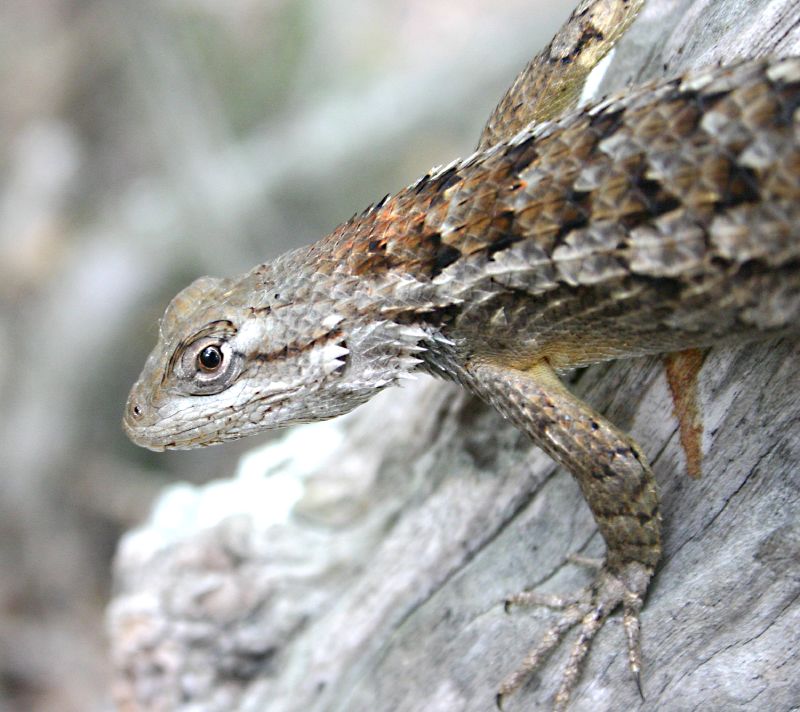Welcome to the captivating world of the Texas Spiny Lizard, scientifically known as Sceloporus olivaceus. With its unique characteristics and intriguing behavior, this reptile has captured the attention of nature enthusiasts and pet owners alike. In this article, we will delve into the fascinating world of the Texas Spiny Lizard, exploring its habitat, appearance, behavior, diet, lifespan, and more. Whether you’re a curious observer or considering a Texas Spiny Lizard as a pet, join us as we unlock the secrets of this remarkable creature.

What is a Texas Spiny Lizard?
The Texas Spiny Lizard, a member of the reptile family, is a captivating creature that has earned its place in the diverse wildlife of Texas. Its scientific name, Sceloporus olivaceus, reflects its classification as a lizard within the genus Sceloporus. With its characteristic spiny scales and vibrant colors, the Texas Spiny Lizard is truly a sight to behold.
Where do Texas Spiny Lizards Live?
The natural habitat of the Texas Spiny Lizard primarily encompasses rocky areas, trees, and shrubs. Found throughout Texas, this lizard is well adapted to its arid surroundings. Its ability to hide in crevices and trees provides it with protection from potential predators and extreme weather conditions.
What do Texas Spiny Lizards Look Like?
The physical appearance of the Texas Spiny Lizard is truly remarkable. Ranging in size from 6 to 8 inches, these lizards possess vibrant hues of green, blue, and brown, which aid in camouflage within their surroundings. Males exhibit striking colors during the breeding season, making them even more visually captivating. With their spiny scales and long tails, these lizards are truly a sight to behold.
Behavior
Texas Spiny Lizards are known for their interesting behaviors, including basking in the sun to regulate their body temperature and climbing trees to survey their surroundings. One fascinating behavior they exhibit is the “push-up” display, which is believed to serve multiple purposes, including territorial signaling and courtship displays.
Diet
When it comes to their diet, Texas Spiny Lizards are primarily insectivores. Their menu consists of insects, spiders, and small invertebrates. Their agile hunting skills and keen eyesight enable them to capture their prey with precision and agility.
Habitat
These lizards are well adapted to arid and rocky environments, allowing them to thrive in Texas. Their ability to hide in crevices and trees provides them with protection from potential predators and extreme weather conditions. While they do not dig holes, they are resourceful in finding natural shelters within their habitat.
Reproduction
Mating habits of Texas Spiny Lizards are a captivating phenomenon. During the breeding season, males engage in courtship behaviors to attract females. Once a successful mating occurs, females lay eggs in a carefully selected location. The incubation period varies, and the hatching of the eggs ushers in a new generation of these enchanting creatures.
Predators and Defense
Like any creature, Texas Spiny Lizards have natural predators. These include birds of prey, snakes, and larger mammals. To defend themselves, they have developed various strategies, such as camouflage and the ability to detach their tails. These adaptations enhance their chances of survival in the wild.
Conservation Status
It is crucial to protect the habitats and populations of Texas Spiny Lizards. Although their conservation status is generally stable, various threats such as habitat loss and fragmentation can impact their survival. By raising awareness and supporting conservation efforts, we can ensure these remarkable reptiles continue to thrive for generations to come.
Lifespan
The lifespan of Texas Spiny Lizards typically ranges from 5 to 8 years. However, under optimal conditions, some individuals have been known to live even longer. Providing proper care, nutrition, and a suitable environment can contribute to their overall well-being and longevity.
Aggression and Handling
Texas Spiny Lizards are not generally aggressive towards humans. However, it’s important to handle them with care and respect. Proper techniques and safety guidelines should be followed to ensure the well-being of both the lizard and the handler.
Additional Dietary Information
While the primary diet of Texas Spiny Lizards consists of insects and small invertebrates, it is important to note that they do not typically consume fruit. Their dietary needs can be met through a well-balanced diet of live prey, ensuring they receive the necessary nutrients for optimal health.
Dealing with Spiny Lizards in Texas
In some cases, Texas Spiny Lizards may become a nuisance in certain areas. If this occurs, it’s important to address the situation responsibly. There are various methods for managing their presence, such as habitat modification and humane deterrents. Consulting with local wildlife authorities or experts can provide valuable guidance in dealing with such situations.
In conclusion, the Texas Spiny Lizard is truly a marvel of nature. With its vibrant appearance, intriguing behaviors, and remarkable adaptations, it captures the imagination of those fortunate enough to encounter it. By appreciating and protecting these reptiles, we contribute to the preservation of Texas’ rich biodiversity. Let us celebrate the beauty and uniqueness of the Texas Spiny Lizard and ensure its place in our natural world for future generations.
Interesting Facts about Texas Spiny Lizards
- Male Texas Spiny Lizards have a blue patch on their throats, which becomes more prominent during the breeding season.
- These lizards can shed and regrow their tails, a process known as autotomy.
- Texas Spiny Lizards are diurnal, meaning they are most active during the daytime.
- They are excellent climbers and can scale trees and shrubs with ease.
- These lizards have a keen sense of sight and can detect movement from a considerable distance.
Resources for Learning More about Texas Spiny Lizards
Remember, the world of the Texas Spiny Lizard is a fascinating one, full of wonder and discovery. By continuing to explore and educate ourselves about these remarkable creatures, we contribute to their well-being and ensure their rightful place in the intricate tapestry of nature.